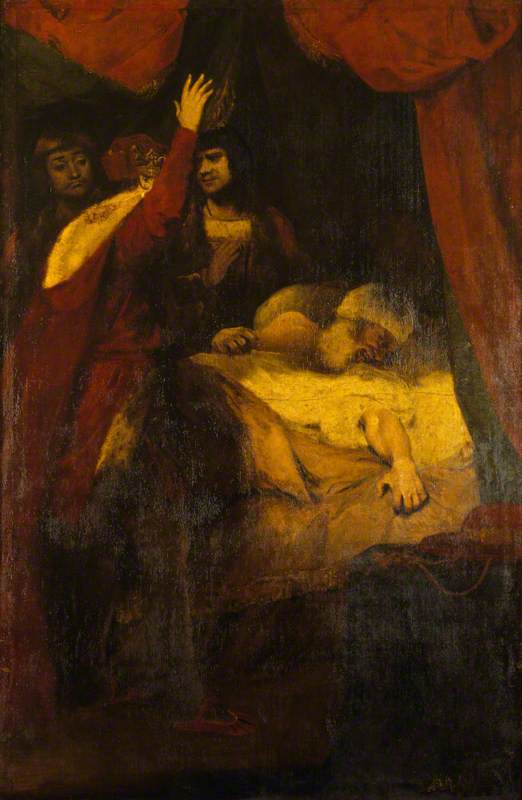“Whose black and bushy beard he had paid him for letting grow”
A couple of years ago I wrote about how the painter Joseph Wright of Derby employed a particular model when he wanted to portray bearded men.
Because beards were well out of fashion in eighteenth-century Britain, it wasn’t easy to find models for paintings of events in the past, when artists knew men wore beards.
I just ran across a relevant anecdote about Sir Joshua Reynolds, from his friend the Rev. William Mason.
Reynolds was painting “The Death of Cardinal Beaufort,” a scene taken from Henry IV, Part Two. That would have been in the late 1780s. Mason wrote:
TOMORROW: Another face revealed in that painting.
Because beards were well out of fashion in eighteenth-century Britain, it wasn’t easy to find models for paintings of events in the past, when artists knew men wore beards.
I just ran across a relevant anecdote about Sir Joshua Reynolds, from his friend the Rev. William Mason.
Reynolds was painting “The Death of Cardinal Beaufort,” a scene taken from Henry IV, Part Two. That would have been in the late 1780s. Mason wrote:
He had merely scumbled in the positions of the several figures, and was now upon the head of the dying Cardinal. He had now got for his model a porter, or coalheaver, between fifty and sixty years of age, whose black and bushy beard he had paid him for letting grow; he was stripped naked to the waist, and, with his profile turned to him, sat with a fixed grin, showing his teeth.It’s a pity we don’t have the perspective of the porter himself, getting a few days’ off manual labor in exchange for letting his beard grow and contorting his face for a painter man.
I could not help laughing at the strange figure, and recollecting why he had ordered the poor fellow so to grin, on account of Shakespeare’s line,Mark how the pangs of death do make him grin.I told him, that in my opinion Shakespeare would never have used the word “grin” in that place, if he could have readily found a better; that it always conveyed to me a ludicrous idea; and that I never saw it used with propriety but by Milton, when he tells us that deathgrinned horriblyHe did not agree with me on this point, so the fellow sat grinning on for upwards of one hour, during which time he sometimes gave a touch to the face, sometimes scumbled on the bedclothes with white much diluted with spirits of turpentine.
A ghastly smile.
After all, he could not catch the expression he wanted, and, I believe, rubbed the face entirely out; for the face and attitude in the present finished picture, which I did not see till above a year after this first fruitless attempt, is certainly different, and on an idea much superior. I know not whether he may not have changed the model. Yet the man who then sat had a fine, firm countenance of the swarthy kind…
I remember I told him so; and a few days after, when I called upon him, he had finished a head of St. Peter, which he told me he took from the same subject.
TOMORROW: Another face revealed in that painting.


No comments:
Post a Comment